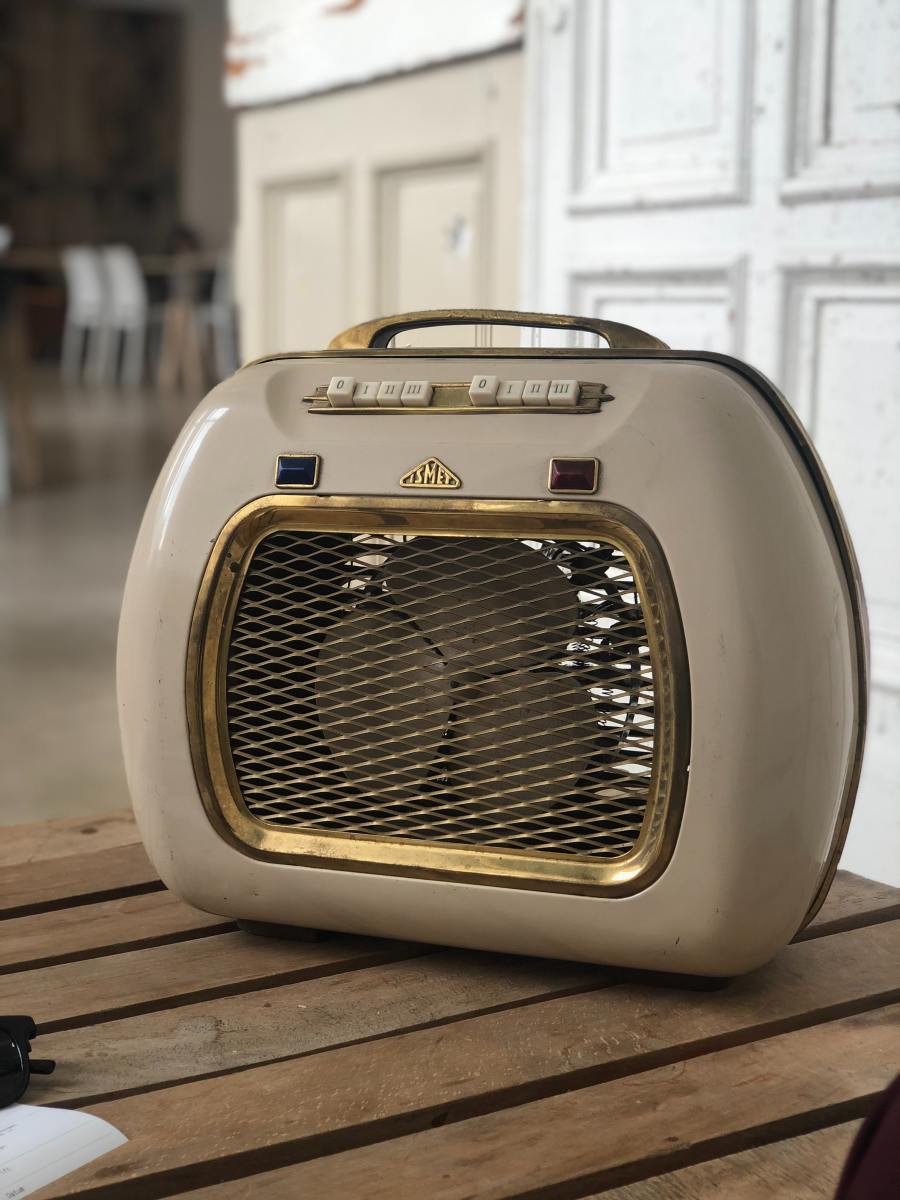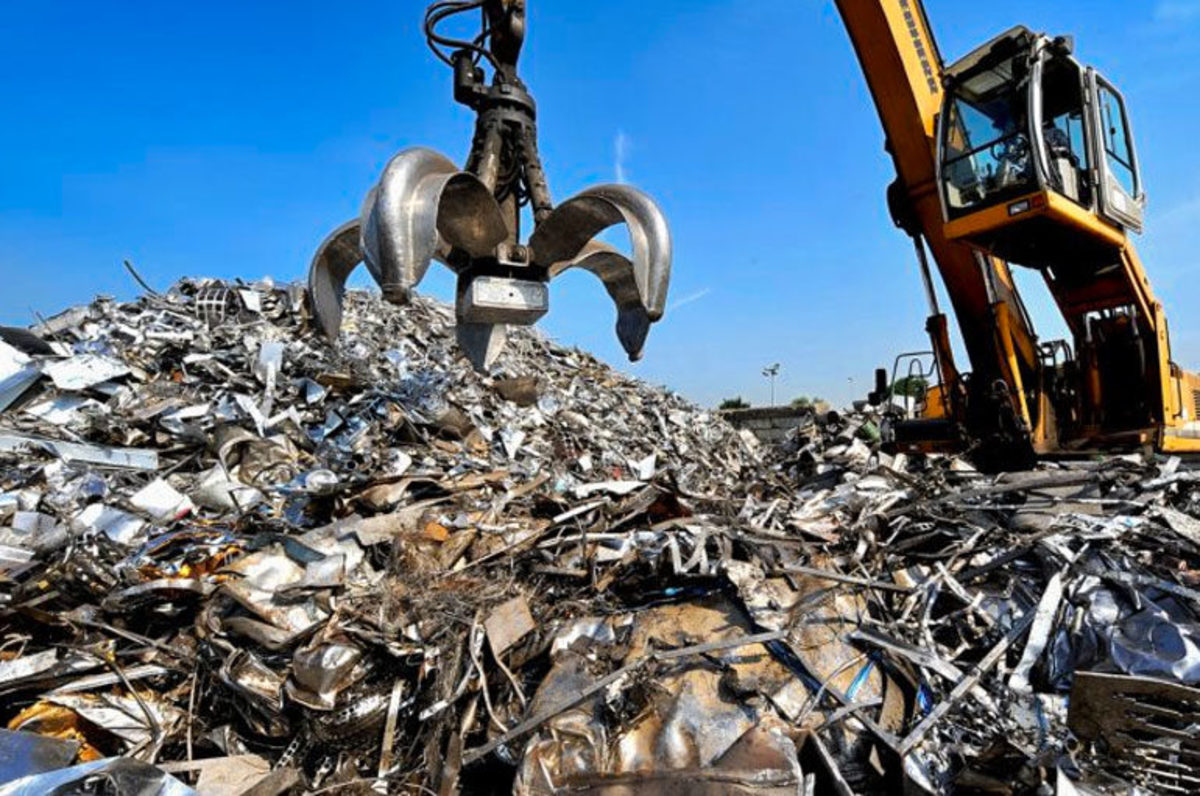Upgrading to a Solar Hot Water Heater
When you add the cost of water and energy together, heating water can be one of the most expensive hidden costs a homeowner has. One way to reduce that cost is to use less water. Another way is to install an efficient solar hot water heater using the sun's energy - which is free - to heat the water you use.
It's also good for the environment. A good solar water heater can reduce the load of your electric water heater by almost 2,500 kWh per year, preventing 4,000 pounds of carbon dioxide from entering the atmosphere annually. This is the equivalent of not driving your car for four months every year.
Solar Powered Water Heater Benefits
There are many benefits to using the sun to heat water. Some are fairly obvious, but are included in the list below:
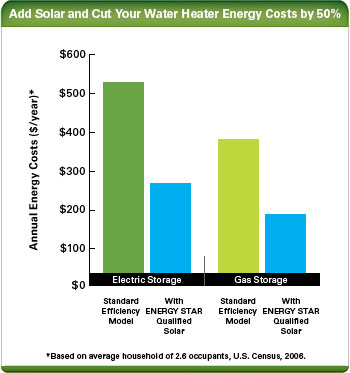
-
Potential energy cost savings of more than 50%.
-
Can be used in almost any climate. Sunshine is free.
-
The average life expectancy of qualified solar water heating systems is 20 years, much longer than standard gas or electrical water heaters.
-
ENERGY STAR qualified solar water heaters can cut your carbon dioxide emissions from heating water in half.
-
In the United States, the federal and many local governments provide rebates and other incentives to help with purchasing a solar water heater.
How Does A Solar Hot Water Heater Work?
Solar water heaters use the sun's thermal energy to heat water. They consist of two main parts: The energy collector/s and the storage tank. Energy collectors heat the water, the storage tank preserves the heated water, preventing the heat from escaping back into the environment. The balance between the two is what characterizes an efficient SWH.
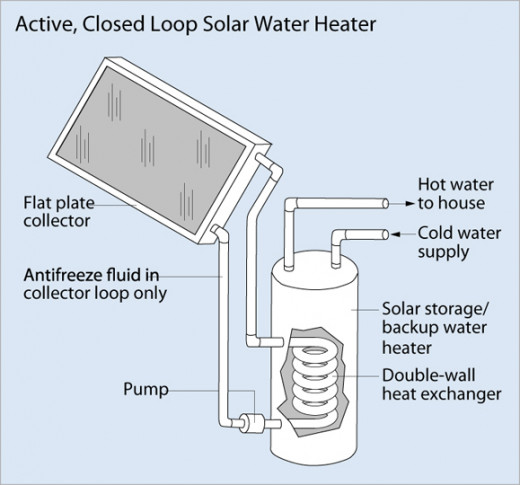
The diagram to the right shows an "active" solar water heater. A submerged cold water pipe supplies unheated water to the storage tank, which is then heated with a coil powered by the solar collector. The heated water rises and is sent out of the tank to the house faucets through a pipe set near the top.
The coil that supplies heat to the water storage tank is filled with antifreeze fluid heated by the solar collector. The liquid is in a closed loop system, meaning that it flows round and round. Heated by the collector, it flows to the storage tank where it cools as water draws heat from it. Then it flows back to the collector to be heated again by the sun, then back to the storage tank to discharge its heat into the water.
This circulation system is one of the criteria that differentiates solar water heaters. The other is the type of collector it uses and how they fit together. "Active" solar water heating systems have circulating pumps and controls. "Passive" ones rely on gravity and the natural, upward movement of heated water.
Some SWH units have two tanks and some have only one. In two-tank systems, the solar water heater preheats water in one tank, before sending it to a conventional water heater tank for storage. The conventional water heater provides any extra heat needed to bring the temperature up to par and keep it there. In one-tank systems, the solar and backup systems heat water in the same tank.
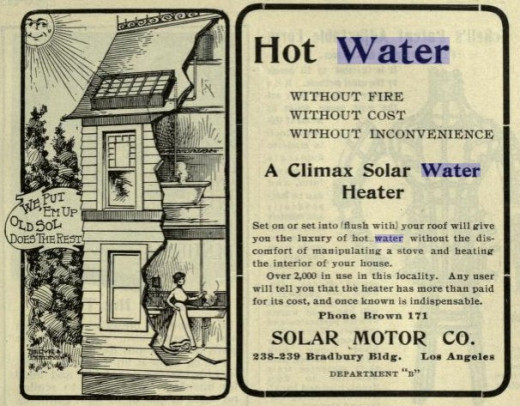
History of Solar Water Heating
Far from a new technology, solar water heating is much older than you might think. There are records of solar collectors in the United States dating back to before 1900. These collectors were simple tanks painted black and mounted on a roof. The first "batch water heater" in the US was created by Clarence Kemp of Baltimore in 1896, when he enclosed a tank in a wooden box for increased insulation. Flat-plate collectors were used in Florida and Southern California in the 1920s, but the strongest surge of interest in solar heating occurred after the first oil crisis in 1973, and has continued to grow.
Now SWH's are distributed worldwide, with China using more than seven times that of the United States, and the European Union somewhere in between. Other leading users are Greece, Cyprus, Turkey, Israel, Australia, Japan, Austria, and Brazil.
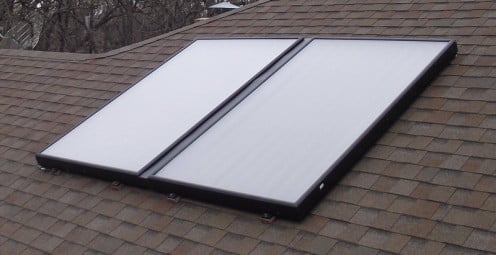
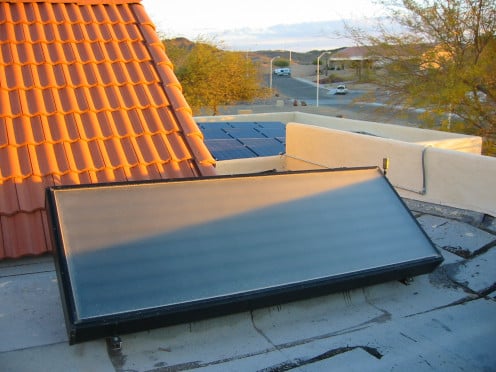
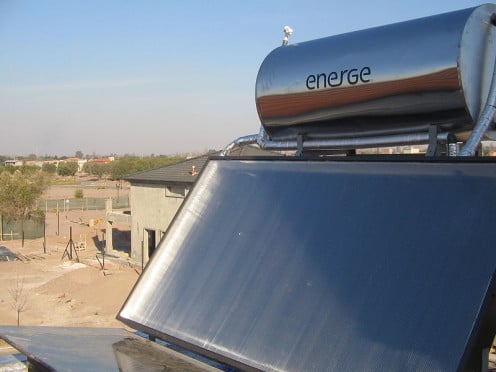
Types of Solar Water Heaters
The following three types of solar collectors are most often used for residences these days:
Flat-plate collector - These are insulated, weatherproofed boxes with a plastic polymer or glass cover, beneath which is a dark absorber plate. Between them, copper pipes inside of polymer pipes hold coolant, which heats up with the sun. The hot coolant is circulated to the water tank to heat the water inside, and is replaced by cooled coolant flowing back to the solar box, as described above.
Integral collector-storage systems (ICS) - These feature one or more black tubes inside an insulated, glazed box. Cold water is pumped through the solar collector to be heated, then continues on into the house to fill the conventional water heater. The speed of the pump varies according to the intensity of the sun. These are also known as "batch" systems, since many panels can be placed side by side to accommodate for higher uses of water.
Thermosyphon systems - These systems rely for circulation on the upward movement of water when it heats up, hence the water tank is located on top of the roof above the solar collector. A roof must be extra strong to be able to hold the weight of the tank.
Price Variability
Understandably, prices vary depending on the complexity of the system. A simple vacuum tube collector can cost as little as $600, whereas a system with an electrical heater backup can cost up to $4000, and one with multiple heating units can reach $6500 or more. It's vitally important to assess your needs and the availability of sunlight before purchasing a unit (see below). It's also possible to save money by building your own solar water heater.
DIY Solar Water Heater
For under $1,000 you can build a unique system, using specified or recycled materials. The following link gives instructions for a number of different types of easy-to-build collectors that work well and can save you a lot of money.
Unfortunately, they may not qualify for government rebates, if they are followed verbatim. You will need to purchase, rather than make, the collectors themselves. Only collectors certified by the SRCC qualify for rebates. By using purchased collectors, however, the full cost of the system will be eligible for the 30% rebate.
- The $1000 Solar Water Heating System
Detailed description and build instructions for a solar water heating system costing $1000 - suitable for cold or warm climates.
Choosing Your Solar Water Heater
There are several factors to take into account when choosing what type and size of solar water heater will work best in your situation:
-
The temperature and amount of the water required from the system.
-
Seasonal changes in ambient temperature and solar radiation.
-
Cyclical day/night changes in temperature.
-
How to prevent the potable water or collector fluid from overheating in summer.
-
How to prevent them from freezing in winter.
The amount and temperature of hot water required during winter is what determines minimum system requirements, whereas the maximum output of the system is determined by the amount needed to prevent the water from becoming too hot.
Solar Water Heater Rebates vs Cost
The purchase of a solar system can take about 10 years to pay for itself, but by taking advantage of Federal tax credits you can recoup the cost more quickly. The credit amount equals 30% of your cost and installation costs can be included. They will pay up to $500 for every 1/2 kilowatt of power capacity.
To qualify for the rebate:
-
Your system must be used for a dwelling, not for swimming pools.
-
It must provide at least 50% of hot water heating.
-
The system must meet fire and electrical code requirements.
-
Your application must be submitted before December 31, 2016, when the program expires.
-
You must own the home and it must be your primary residence. You can't claim the rebate if you rent or lease.
- Both existing and newly constructed homes qualify.
On the other hand, you might want to check for factory returns. Many products are sent out with missing parts or somehow not working properly. Those that are returned go back to the factory to fix, then are sold to the public at huge discounts. They are essentially new and you can save a lot of money buying them. They don't qualify for rebates, but the discount might be worth it. Look for warehouses that sell factory refurbished equipment.
Solar Water Heater Installation
The proper installation of your solar water heater depends on many factors, including:
-
Daily and seasonal movements of the sun and how it hits your property.
-
Overall climate - how hot and cold it gets and how long the seasons last.
-
Local building code and requirements.
-
Construction safety and long-term stresses on the building.
If you have a handyman background, already know local codes, and have the time to spend, you might want to build a solar system yourself. Otherwise, it's best to have a qualified, solar thermal systems contractor install your system.
Before you start looking for a system or a contractor, you might want to do an informal sun site survey. How often does the sun actually strike your house? What time of day and how long does it last? Consider both the roof and the south-facing side of your house. This will tell you whether or not it will actually be worth the cost to install a solar water heater. If you don't get enough sun to heat the house water, but you have an outdoor pool, there is still the potential for saving electricity with a solar pool heater.
Solar Water Heater Maintenance
Passive systems (without a mechanical circulation system) don't require much maintenance. Active systems require more, since they have additional piping and pumps to keep functional. Read any manuals that come with the system and discuss maintenance requirements with your system provider and/or installer. The Internet is an excellent resource also.
Remember that part of your system is likely to be the conventional electric or gas heating that came with the house (if bought, rather than built) and will require the same kind of maintenance as before . . . although maybe not as often. In dry climates where there is a lot of dust and not much rain to rinse off the outside components, you will have to clean the solar panels yourself.
Time-wise, you can count on a 3-5 years maintenance check, conducted either by you or your solar contractor/installer. Systems with electrical components will likely require a few replacement parts after about 10 years.
For more detailed information see:
- Solar Water Heaters | Department of Energy
Solar water heaters can be a cost-effective way to generate hot water for your home. They can be used in any climate, and the fuel they use -- sunshine -- is free.
For ways to save water see:
- How to Practice Water Conservation
One of the threats most common to much of the world is the drying up of water. Here are ways individuals can use water efficiently, so there is enough for everyone.


